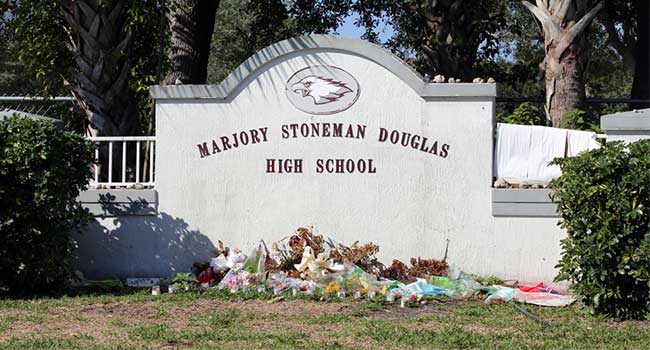
Broward County School Board Reveals Overview of New Security Measures
The School Board of Broward County, including Marjory Douglas Stoneman High School, has revealed what it is doing to create safer schools.
- By Sydny Shepard
- June 05, 2018
School board members in Broward County are finally revealed the safety and security measures they will be implementing on campus following the shooting at Marjory Stoneman Douglas that killed 17 people and injured over a dozen more. The new measures were detailed in a letter from Robert Runcie, the superintendent of schools.
"Our District and our entire community are forever changed by the tragedy at Marjory Stoneman Douglas High School," Runcie said in the letter. "As we approach the end of what has been a heartbreaking school year, we remain focused on building strength as a community and finding ways to heal together."
Runcie says the District talked with employees, parents and community partners to "reinforce and enhance safety practices across all schools and campuses."
In addition to the security already in place, Runcie outlined measures that will be taken in the 2018-2019 school year.
The first on the list of safety and security measures was the enlistment of a independent security firm which is conducting risk assessments for all schools and reviewing district policies, training and security staffing models to provide recommendations for security enhancements. The district will also be working to provide at least one School Resource Officer or school safety officer for every school for the new year.
Broward County Schools will be enforcing safety protocols in the future, including requiring students to wear identifications badges and visitors to wear a school or district form of identification while on campus at all times. The schools will work to keep all classroom doors locked at all times as well as secure and lock all exterior doors and gates throughout the day.
The district says it will be working on conducting emergency preparedness training for faculty, staff and students on a regular basis. This includes enhanced active assailant training, developed by a multi-agency work groups. Additional training is being developed "specifically for students" and will be delivered in the 2018-2019 school year.
Additional future safety and security enhancements to include:
- Upgrading real-time surveillance camera systems at all schools
- Mental health services to be expanded
- Extensive review of discipline policies and programs
- Expedited Single Point of Entry measures for campus visitors, which use fencing and door systems to limit access to one entrance
- Continue to engage with community to garner suggestions for safety and security
"The safety of our students, employees and schools will continue to require an ongoing community-wide effort," Runcie said in the letter. "We encourage parents and families to remind their children - if you see something, say something."
About the Author
Sydny Shepard is the Executive Editor of Campus Security & Life Safety.